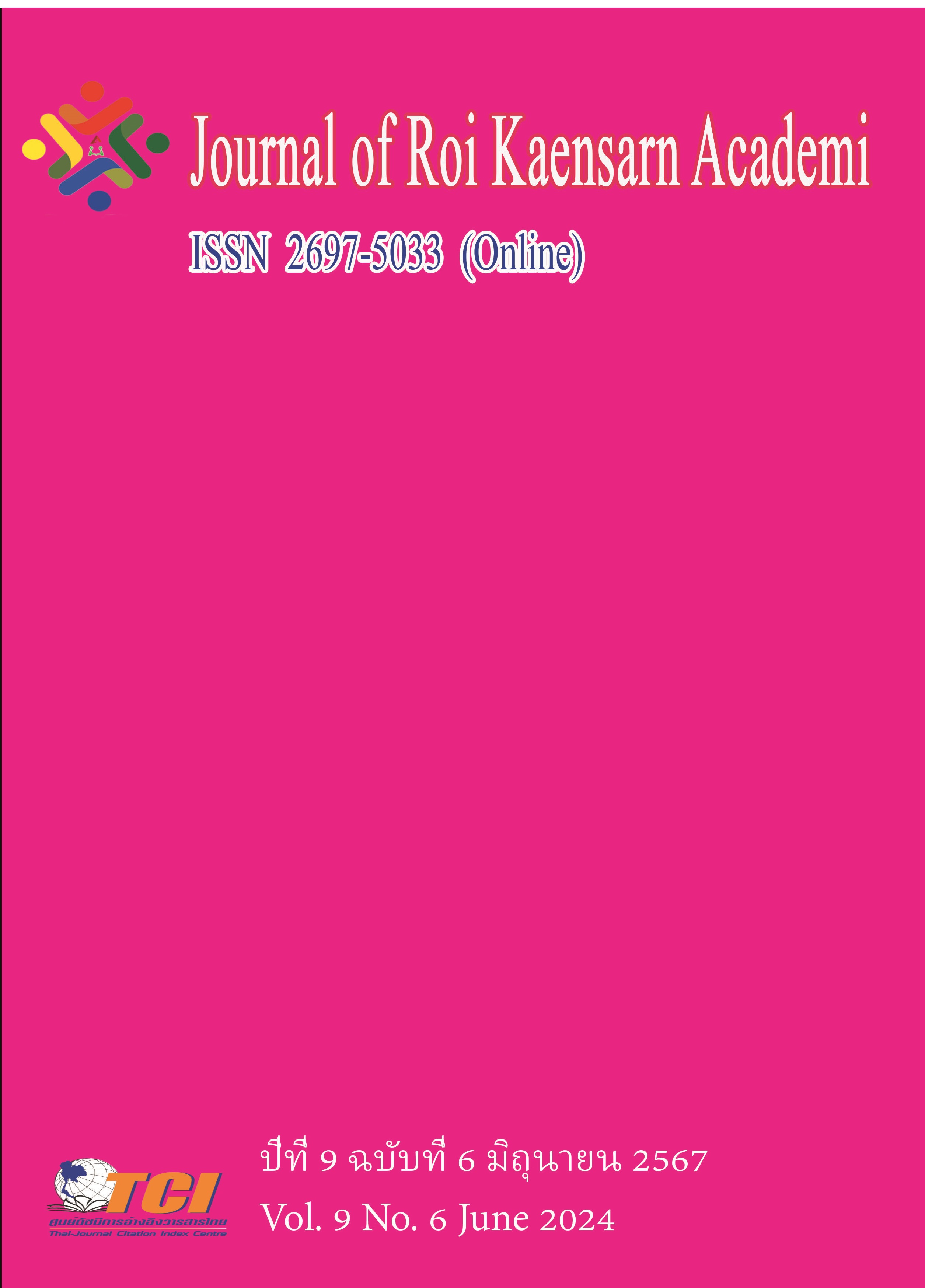การประยุกต์ใช้เทคโนโลยีการพิมพ์ 3 มิติ ด้วยเส้นใยกรดพอลิแลคติก สำหรับนวัตกรรมการพิมพ์ขาเทียมใต้เข่า
Main Article Content
บทคัดย่อ
ในการวิจัยนี้ได้นำเสนอนวัตกรรมการออกแบบและขึ้นรูปขาเทียมใต้เข่าด้วยเทคโนโลยีการพิมพ์ 3 มิติ งานวิจัยนี้นำเส้นใยกรดพอลิแลคติก (Polylactic acid; PLA) มาศึกษาและเป็นวัสดุสำหรับการพิมพ์ขาเทียมใต้เข่า ทั้งนี้ยังได้ใช้การวิเคราะห์คุณสมบัติเชิงกลด้วยระเบียบวิธีไฟไนต์เอลิเมนต์ของขาเทียมใต้เข่า ในการสร้างแบบจำลองด้วยคอมพิวเตอร์ของขาเทียมใต้เข่าสามรถวัดค่ามอดูลัสของยังอยู่ที่ 0.2767 x 1010 N/m2 และด้วยวัดอัตราของเสียรูปของขาเทียมใต้เข่าอยู่ที่ 6.47 x 10-4 mm/N ผลการศึกษาแบบจำลองทดสอบขาเทียมใต้เข่านั้นทำการพิจารณาจากค่ามอดูลัสของยังเห็นได้ว่ามีความแข็งแรงเพียงพอสำหรับการออกแรงกดกระทำต่อขาเทียมใต้เข่า สำหรับการสร้างแบบจำลองด้วยคอมพิวเตอร์เมื่อถูกแรงกระทำ 100 – 1,200 N ผลการวิเคราะห์ด้วยระเบียบวิธี ไฟไนต์เอลิเมนต์ไม่พบความเสียหายต่อแบบจำลอง และผลการศึกษาการเสียรูปของโครงสร้างขาเทียมใต้เข่าอยู่ในอัตราที่ต่ำเมื่อถูกแรงกระทำ สำหรับขั้นตอนการนำเทคโนโลยีการพิมพ์ 3 มิติ มาใช้ในการพิมพ์ขาเทียมแบบแบ่งเป็น 5 ส่วน นั้นใช้เวลาในการพิมพ์ทั้งหมดอยู่ที่ 36 - 48 ชั่วโมง ทั้งนี้ขึ้นอยู่กับความละเอียดของการพิมพ์และโมเดลเทคโนโลยีการพิมพ์ 3 มิติ งานวิจัยนี้ได้เห็นถึงความสำคัญของการนำเทคโนโลยีการพิมพ์3 มิติ มาใช้กับขบวนการพิมพ์ขาเทียมใต้เข่าเพราะจะช่วยลดขั้นตอนการทำขาเทียมใต้เข่าลงได้ด้วยการที่ไม่ต้องหล่อแม่พิมพ์จากผู้พิการซึ่งมีหลายขั้นตอนในขบวนการทำขาเทียม งานวิจัยนี้ยังลดต้นทุนการผลิตขาเทียมใต้เข่าลงได้ด้วยการนำเส้นใย PLA สำหรับการพิมพ์ที่มีต้นทุนค่าวัสดุเพียง 125 – 200 บาท/ชิ้น คิดเป็นน้ำหนักโดยเฉลี่ยรวมของขาเทียมใต้เข่านั้นจะอยู่ที่ 0.25 kg เป็นต้นทุนค่าวัสดุที่ถูกและมีน้ำหนักเบามีความเหมาะสมกับการใช้งานของผู้พิการ งานวิจัยนี้จึงมีความสำคัญต่อการพัฒนาศักยภาพของ ผู้พิการด้วยการนำเทคโนโลยีการพิมพ์3 มิติ เพื่อนำไปใช้ในการออกแบบให้เหมาะสมกับการใช้งานของผู้พิการต่อไป
Article Details
เอกสารอ้างอิง
นุชสรา รักชาต. (2562). การเข้าถึงการให้บริการสาธารณะของผู้พิการในองค์การบริหารส่วนตำบลชายนา อำเภอเสนา จังหวัดพระนครศรีอยธุยา. มหาวิทยาลยัราชภัฏพระนครศรีอยุธยา.
วนาลี มากคช. (2565). การเข้าถึงสวัสดิการของคนพิการในเขตเทศบาลนครระยอง. คณะรัฐศาสตร์และนิติศาสตร์ มหาวิทยาลัยบูรพา.
นฤมล กมลสวัสดิ์. (2557). คุณภาพชีวิตของผู้ที่ได้รับขาเทียมระดับเหนือเข่าและใต้เข่า หน่วยกายอุปกรณ์ โรงพยาบาลระยอง. The Journal of Prapokklao Hospital Clinical Medical Education Center. 31 (1), 18-29.
พิชิต แร่ถ่าย, เอกสิทธิ์ ภู่ศิริภิญโญ และ ภัทรา วัฒนพันธุ์. (2556). เปรียบเทียบการเดินบนพื้นราบระหว่างคนปกติและผู้พิการที่ใส่ขาเทียมชนิดข้อเข่า KKU 2. J Thai Rehabil Med. 23(1), 24-28.
ไพลิน กระจ่างพิภพ. (2557). การวิเคราะห์ต้นทุนการผลิตของกระบวนการผลิตชิ้นส่วนขาเทียมใต้เข่า. คณะวิศวกรรมศาสตร์ มหาวิทยาลัยสงขลานครินทร์.
นฏา จันทไทย, อรรถพล โชติรัตนพิทักษ์ และ ธนิน สุวรรณชาติ. (2557). นวัตกรรมขาเทียมระดับใต้เข่าโรงพยาบาลกาฬสินธุ์. วิชาการสาธารณะสุข. 23 (5), 860.
ณัฐ ดวงรัตนประทีป และ คณะฯ. (2561). ความรู้เบื้องต้นเกี่ยวกับระเบียบการไฟไนต์เอลิเมนต์และการประยุกต์ใช้ในทางทันตกรรมรากเทียม. วารสารชม. ทันตกรรม. 39 (3), 29-30.
Shakespeare W., & Hamlet, P., (2020). Enhancing the Quality of Life for Persons with Disabilities through Technological Innovations. Journal of Disability Studies. 25 (2), 45-68.
Hugo I. Medellin-Castillo and Jorge Zaragoza-Siqueiros, (2019). Design and Manufacturing Strategies for Fused Deposition Modelling in Additive Manufacturing : A Review. Chinese Journal of Mechanical Engineering. Vol. 32, No 53.
Merel van der Stelt, Arico C. Verhulst, Jonathan H. Vas Nunes, etc. (2023). Improving Lives in Three Dimensions: The Feasibility of 3D Printing for Creating Personalized Medical Aids in a Rural Area of Sierra Leone. Am J Trop Med Hyg, 102 (4), 905–909.
Koray Özsoy, Ali Erçetin, Zihni Alp Çevik. (2021). Comparison of Mechanical Properties of PLA and ABS Based Structures Produced by Fused Deposition Modelling Additive Manufacturing. European Journal of Science and Technology, No. 27, 802-809.

